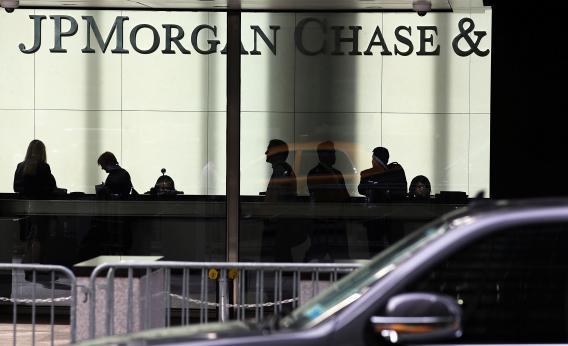JPMorgan was supposed to be among the best managers of bank risk in the world. This week it published an internal report into the failings which led to $6.2 billion of trading losses at its chief investment office in 2012. If the mix revealed – conflicting mandates, discredited theory, inadequate checks and primitive technology – is really as good as it gets, financial watchdogs and investors everywhere should worry. There are plenty of lessons for regulators and bank executives who want things done right.
First, the controls should match the mission of a unit that manages excess cash, as the CIO did, and is trying to make money in the process. The report suggests JPMorgan’s supervision was set for the days when the CIO was a sleepier and much smaller operation which engaged in simple, old-fashioned hedging. Not enough changed when the CIO morphed into a trading operation that was a force in the market for complex synthetic credit default swaps. One trader was nicknamed the London Whale in press reports.
In particular, the CIO was under pressure to minimize reported risk. Models are used to calculate the measures of risk: risk-weighted assets (RWA), used to calculate capital strength, and value-at-risk (VaR), used to estimate likely losses. When the models suggested that some assets should be sold to keep the risk at an acceptable level, the unit’s traders sometimes just tried to change the models. But the bank’s senior risk staff did not summon up the necessary skepticism.
Second, the CIO’s VaR models relied on flawed theory. Credit default swaps simply don’t behave in line with the normal, or Gaussian, distribution typically assumed. The so-called tail risks, or the chances of extreme events, are bigger than that theory predicts. Ina Drew, who ran the CIO, referred to one day’s mark-to-market losses as an eight standard deviation event, according to the report. That translates mathematically into something that should only happen once every several trillion years. It makes no more sense than Goldman Sachs finance chief David Viniar’s famous remark as the crisis unfolded in 2007 about seeing 25 standard deviation events, several days in a row.
Third, not only was the VaR approach flawed, but JPMorgan did not calculate VaR correctly. At least one model was stored on Excel spreadsheets with formulae that hadn’t been properly checked. Inputs were supposed to be updated manually, but some numbers were out of date.
Someone in another part of JPMorgan even spotted an error in the CIO’s VaR calculation. For the person in question to take the time to identify the mistake, the VaR number must have looked badly off-kilter. Yet CIO managers dismissed it as a one-off. At best, the CIO’s systems last year look alarmingly amateurish. At worst, the managers didn’t understand or care much about the risks. Either way, these problems provide definitive talking points for regulators examining other companies.
Next comes the pricing of illiquid positions. It’s a fact of a financial firm’s life that when there is room for judgment or different answers, it is in a trader’s interest to provide the rosiest possible numbers. That clearly happened in the CIO. It did not follow best industry practice of asking outsiders to provide prices for illiquid positions. Managers should not rely on traders themselves, as the CIO largely did – but JPMorgan is surely not the only institution to do so.
Illiquid assets are also hard to shift, and for the CIO’s massive trades even accurate models would not have been reliable indicators of actual market prices. Other traders and financial media were already picking up on the CIO’s huge positions, but Jamie Dimon, the bank’s chief executive, agreed that these rumblings were just “a tempest in a teapot.” It was a big teapot: certain derivative positions may have had a nominal value of as much as $10 trillion, although there were other offsetting trades. Small mistakes about market prices could, and did, lead to large losses.
Dimon and his subordinates understandably wanted to believe that everything was indeed under control; unfortunately they believed it without first asking enough hard questions.
Lastly, JPMorgan’s report concludes that its compensation system wasn’t a problem. But it looks as though the incentive system didn’t help. Some traders were reluctant to unwind positions fully because it would crystallize losses, which would in turn normally hurt bonuses. Drew did nothing to reassure them. In any case, for bank traders, closing positions feels like housekeeping, which is never as well paid as making profitable trades.
Bank bosses and regulators alike need to ensure that measuring, managing and minimizing risk is part of the culture of any trading room. JPMorgan’s whale debacle shows how not to do it. Dimon has taken steps designed to change things. With luck, the lessons will help other banks avoid similar troubles.
Read more at Reuters Breakingviews.
